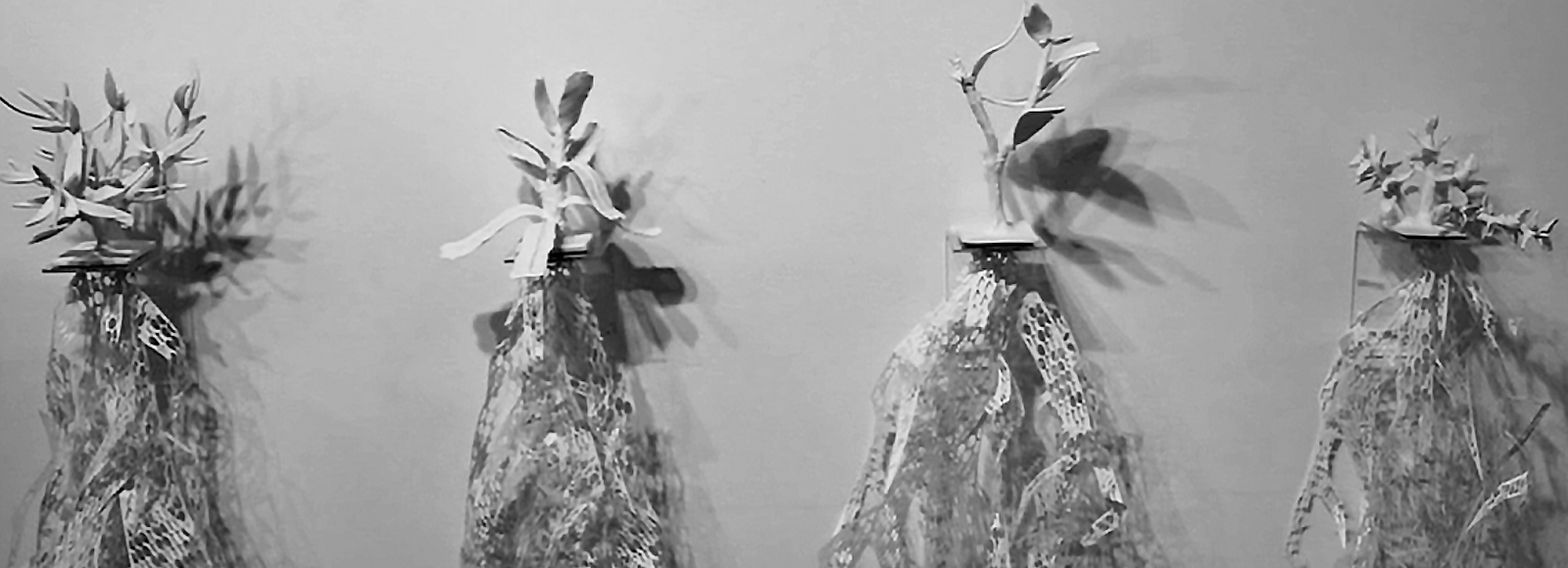
There is an unsettling beauty to artist Kate Dunn's individual and collaborative works which explore the fundamental structures and the mathematical formulas that explain all material phenomenon. An artist with a scientific bent Kate's specialisation is digital fabrication. She joined UNSW Art & Design in 2015.
These intriguing and unsettling qualities come alive in her collaboration with industrial designer, Graham Clarkson, Pattern Symbiosis. It’s a visually subtle and thematically rich installation combining Australian porcelain and digitally cut paper. The artworks are wall-mountable expressions of climate change data. Their subjects are near extinct plant species from the Cumberland Plains. Kate has produced the ceramic top section of each work; the stem and leaf components of selected plants. Graham has digitally outputted the binary code of each species’ root system. His laser cut strips of paper, which feature 0s and 1s contained within the DNA double helix, hang beneath each porcelain plant.
For the viewer, the artworks look like icy plants removed from the earth. Kate says the intention is to convey complex and confronting issues around climate change in a manner other than through graphs and charts. She wants the viewer to stop, look and think.
In her research projects at Art & Design, Kate is furthering exploration of the relationship between design, architecture, robotics and science. She’s utilising the machinery available in the campus rapid prototyping lab, including 3D printers and laser cutters. Her aim is to allow organic alteration, which would occur constantly and naturally in the surrounding world, to infiltrate robotic fabrication. The key is the use of sensors in the role of material feedback underpinning the design process.
Kate will present the outcomes of this research at the upcoming Rob|Arch conference, hosted at Sydney University 17-19 March, 2016. She’s also running an associated workshop in collaboration with colleagues from Harvard University, The Catalonian Institute of Architects, and Sydney University – so popular it sold out almost immediately – on interactive 3D printing, exploring the boundaries between digital and materials worlds.
Kate Dunn is a researcher in the Creative Robotics Lab at UNSW Art & Design.
